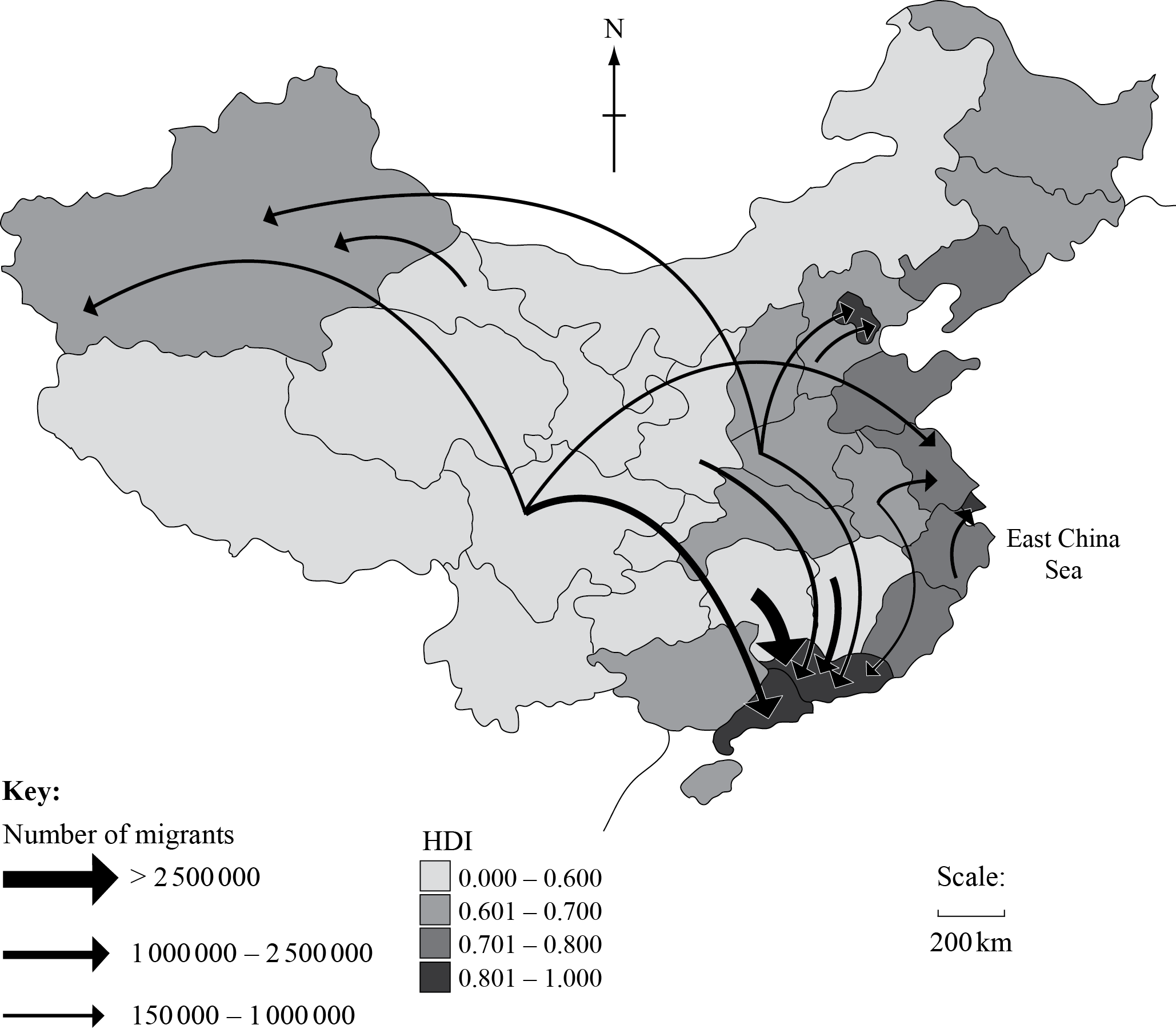| Date | November 2012 | Marks available | 2+2+2 | Reference code | 12N.1.bp.1 |
| Level | SL and HL | Paper | 1 | Time zone | |
| Command term | Explain | Question number | 1 | Adapted from | N/A |
Question
The map shows internal migration flows in China and the Human Development Index (HDI) for each province for 2005.

[Source: Human Development Report (2009)]
Describe the pattern of internal migration shown on the map.
Briefly explain three positive socio-economic impacts that this migration could have for the provinces of destination.
Explain why an imbalance in the birth ratio exists in some societies.
Markscheme
Any of the following statements for [1 mark] each:
- the majority of migrants move to South/South-East
- little/limited movement to West
- majority of movement is to the coast
- movement is from provinces with low HDI to high HDI.
One of the statements must refer to data values in the key for [1 mark].
Credit other valid descriptions that refer only to information found on the map (i.e. “rural to urban” is not valid).
Impacts must be of a socio-economic nature and must be framed as positive.
- Increased labour force – surplus of cheap labour for industry
- Increased consumer market – stimulates economy of area
- More investment by government – improved infrastructure and services
- Arrival of “others” – stimulates rich cultural diversity
- Female migrants – increased incidence of marriage (Chinese context)
Award [1 mark] for each stated impact and [1 mark] for explanation.
Answers should show an understanding of birth ratio – stated or implied [1 mark] and then identify a relevant example of where the birth ratio is unbalanced for example, China, Taiwan, India, South Korea [1 mark].
The following [1+1] marks is for any two valid explanations:
- sex-selective abortions can result in a much more extreme birth ratio
- ultrasound technology has made sex selection possible
- boys favoured to carry on the family name, avoid paying a dowry etc.
- unreported births / female infanticide could skew official data.
Examiners report
Candidates provided good descriptions but some answers lacked reference to the data/figures provided and hence could not get the maximum mark.
Quite well answered but weaker responses struggled to come up with three distinct or three positive impacts.
There were a few good responses that correctly identified what birth ratio is, making reference to examples: China, India and Afghanistan. Answers commented on the social and economic reasons for the imbalance. Unfortunately however, there were many who failed to show any knowledge and understanding of birth ratio and instead wrote about birth rates, thus not answering the question. Birth ratio is in the guide and needs to be covered as a concept in the gender and change section. Some candidates also need to take care when writing as responses would often argue that girls are aborted because they are weaker, or unable to work as hard as boys. This is obviously an incorrect perception that may be leading to sex selective abortions, not a factual truth, and this is how it should be explained in responses.

